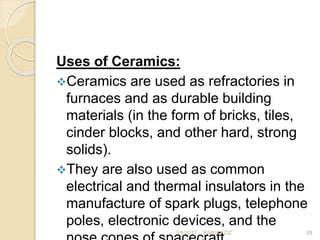The document provides an overview of ceramics, highlighting their definition, composition, and manufacturing processes. It discusses the types of raw materials, classifications of ceramics, and various manufacturing techniques including molding and firing in kilns. Additionally, it covers properties, uses, and the significance of ceramics in industries such as construction and electronics.





























